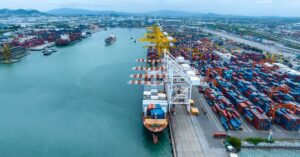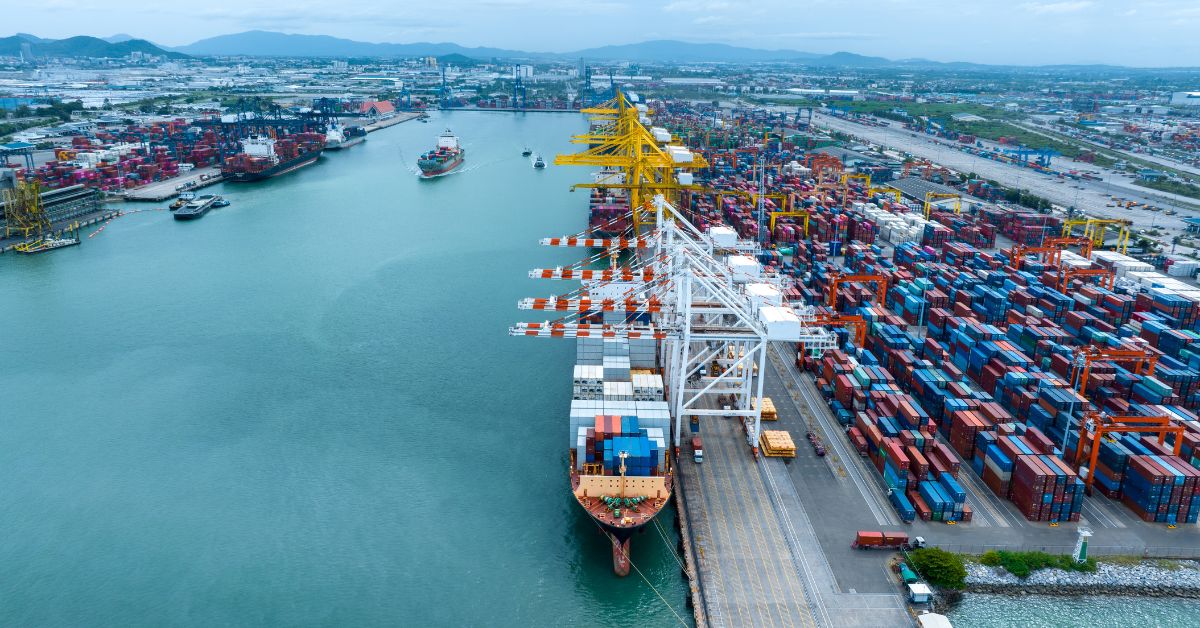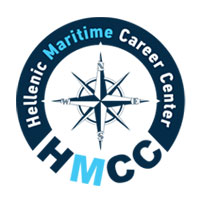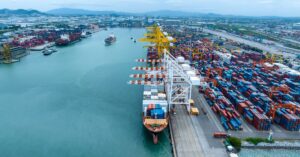
Filipino Seafarer Dies From Injuries A Week After Houthi Attack On Cargo Ship
October 7, 2025
NEOLINE’s First Sail-Powered Cargo Ship Completes First Commercial Loading
October 7, 2025

The United States has issued a firm directive to operators of Chinese-built, owned, or operated vessels, requiring them to pay new port docking fees before arrival at any U.S. port.
The guidance, released by U.S. Customs and Border Protection (CBP), marks the first formal clarification on the pending USTR Section 301 Vessel Fees, which are due to take effect on 14 October.
CBP stated that all payments must be made through the U.S. Treasury’s Pay.gov system at least three days prior to arrival. The agency warned that ships arriving without proof of payment may be denied permission to load or unload cargo and could have their port clearance withheld until payment verification is completed.
According to the guidance, the responsibility for confirming whether a vessel owes the fee rests entirely with the operator. CBP made it clear that “the burden for determining if a vessel owes the fee is on the operator, not CBP,” and that operators should not expect to pay at the port of entry.
The Section 301 Vessel Fees are part of U.S. trade measures targeting China’s dominance in the global shipbuilding industry. Under the new system, Chinese-owned or operated vessels will pay $50 per net ton, with the fee increasing by $30 per ton each year from 2026 through 2028.
Ships that are Chinese-built but operated by non-Chinese entities will face a lower fee, $18 per net ton or $120 per container discharged, whichever is higher. This charge will rise by $5 per ton annually until April 2028.
Roll-on/roll-off (Ro-Ro) vehicle carriers will pay $14 per net ton. Each vessel will be charged up to five times per year, depending on the number of port calls made.
CBP confirmed that fees must be paid electronically via bank transfer through Pay.gov, where the system will automatically calculate charges based on vessel information entered by the operator, including name, port of arrival, estimated arrival date, IMO number, voyage number, and operator name.
The new requirements are expected to affect several major container shipping companies, including COSCO Shipping and Orient Overseas Container Line (OOCL), both of which are Chinese-owned. According to data from industry research firm Alphaliner, the top ten container carriers could collectively pay more than $3.2 billion in U.S. port fees in 2026.
COSCO Shipping could face around $1.53 billion in charges if its fleet deployment remains unchanged, while Israel-based ZIM may pay approximately $510 million. Ocean Network Express (ONE) is expected to incur about $363 million, though it has already reduced exposure by removing ten Chinese-built vessels from its U.S. services.
ONE announced that it will not introduce new surcharges to recover the cost from customers and confirmed that service coverage would remain unchanged. Its alliance partners, Hyundai Merchant Marine (HMM) and Yang Ming, are largely exempt from the new charges due to their non-Chinese-built fleets, which may help reduce overall exposure.
While CBP’s update confirmed the payment process, it did not provide new operational details. Legal experts, including Jeanne Grasso of the U.S. law firm Blank Rome, noted that the shipping industry is still awaiting further clarification from the Office of the U.S. Trade Representative (USTR), which is expected to publish a detailed FAQ.
In anticipation of the new fees, some shipping companies have begun adjusting their operations. Seaspan Corporation, the world’s largest independent charter owner of container vessels, has moved its headquarters from Hong Kong to Singapore and plans to reflag around 100 vessels to the Singaporean registry to avoid potential penalties.
Meanwhile, China has introduced a retaliatory decree authorising its government to impose special fees or port restrictions on vessels from countries that apply discriminatory measures against Chinese operators or crew. The countermeasures could include higher port charges or restrictions on port access for U.S.-linked vessels.
Reference: CBP
Source: Maritime Shipping News


